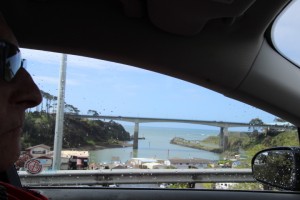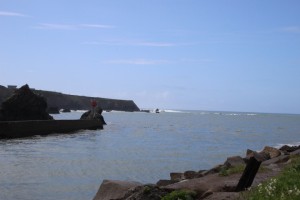Sunday 20th March
This morning was a rare time on this circumnavigation because we had bad weather. We explored the Pudding Creek trestle bridge.
Timber trestle bridges were commonplace on the Northwestern Pacific railway network as there were many deep inlets to cross (as we did yesterday in the car) and a wooden trestle could be built quite quickly from the locally resourced timber. The Pudding Creek bridge was completed by 1916 when the Fort Bragg base Union Lumber Company began extracting timber from the forests north of the town. The contemporary photograph shows the trunks of redwoods being hauled to the processing plant at Noyo Harbour. Today this is a car park.
The locomotive on the photograph is an oil burner in order to prevent sparks from igniting the bark of the trees. Bark was also exported to be used as a tannin in the leather industry. It was removed in the forests, stacked as rolls on lumber trucks and taken by train to lumber yards such as at Fort Bragg.
This bridge was converted to a road bridge in 1949 when lorries took over from steam trains, possibly because the lorry can go right into the forest whereas with railways the timber has to be transported to the railhead. The other contemporary photograph shows how at Caspar south of Fort Bragg the trees were sent down a log slide into the harbour and then loaded onto ships.
We saw the preserved railway train at work but unfortunately it was a diesel and not the large steam locomotives that were used on the line when hauling timber.
Later we explored Noyo Harbour which is a working fishing port but also a place for sampling the fish in a variety of restaurants. Today the harbour is spanned by a steel and concrete bridge replacing a series of railway bridges that provided access to the big lumber yard.
We ate at Silver’s on the Wharf restaurant, just below the bridge. Another Sunday dinner we haven’t missed!


















